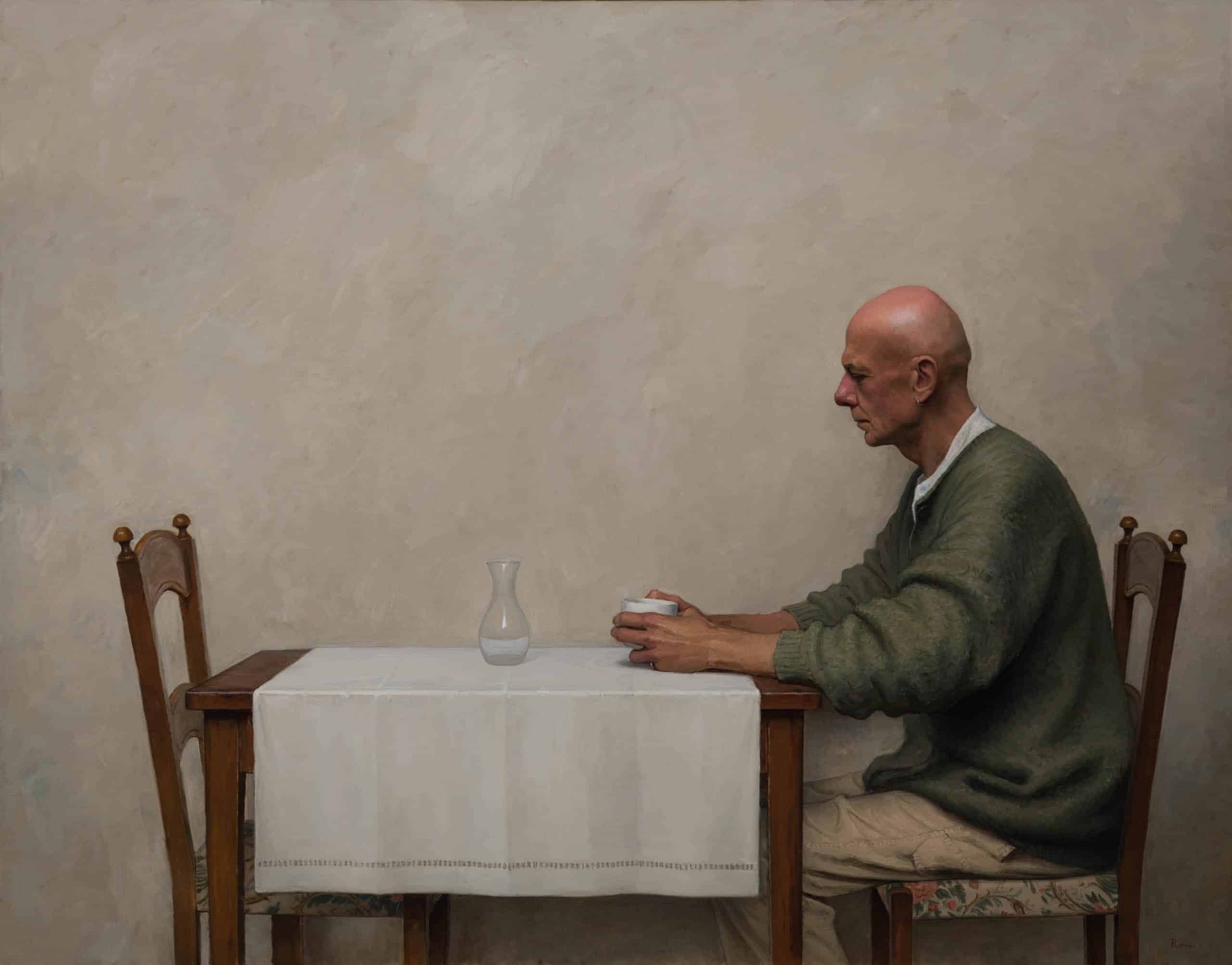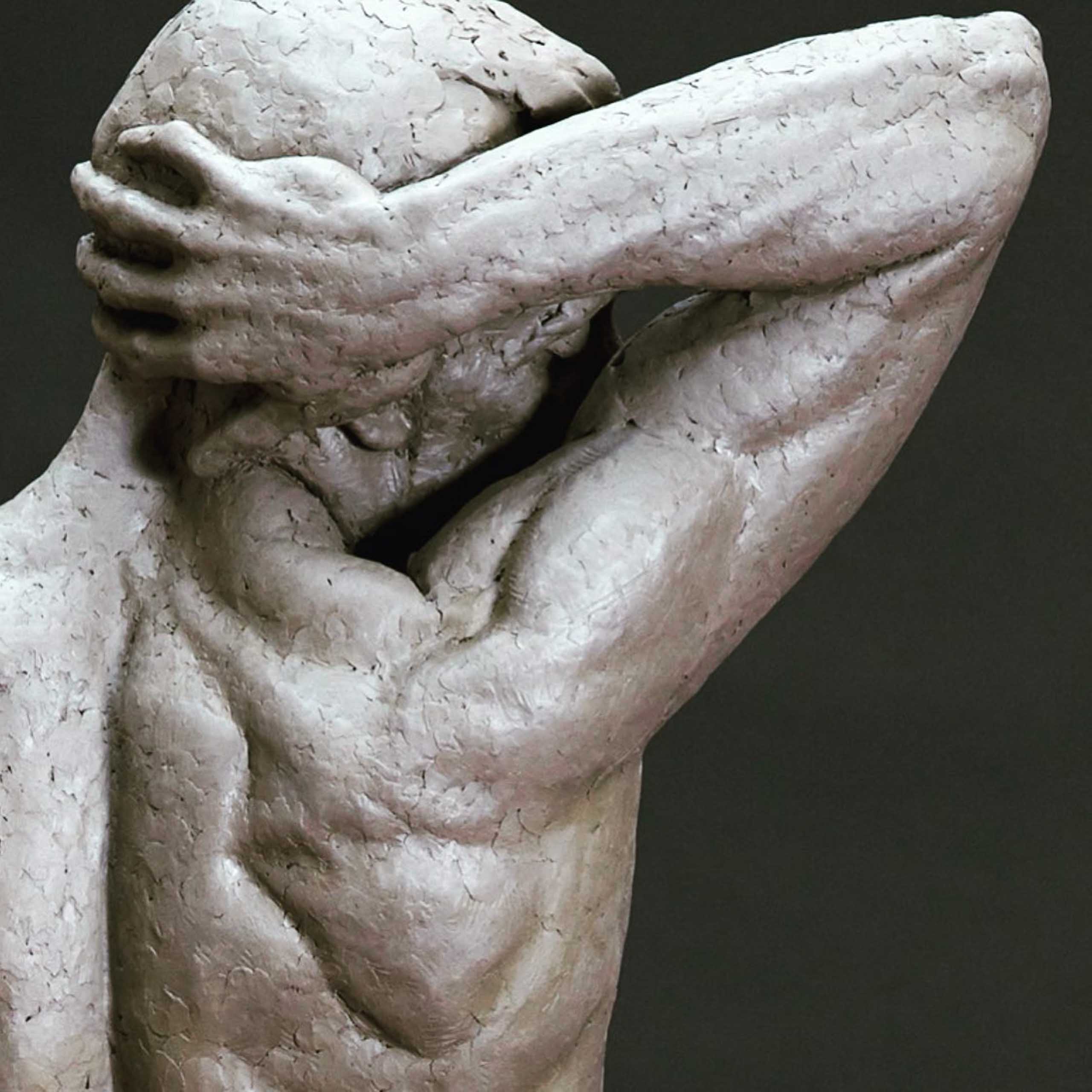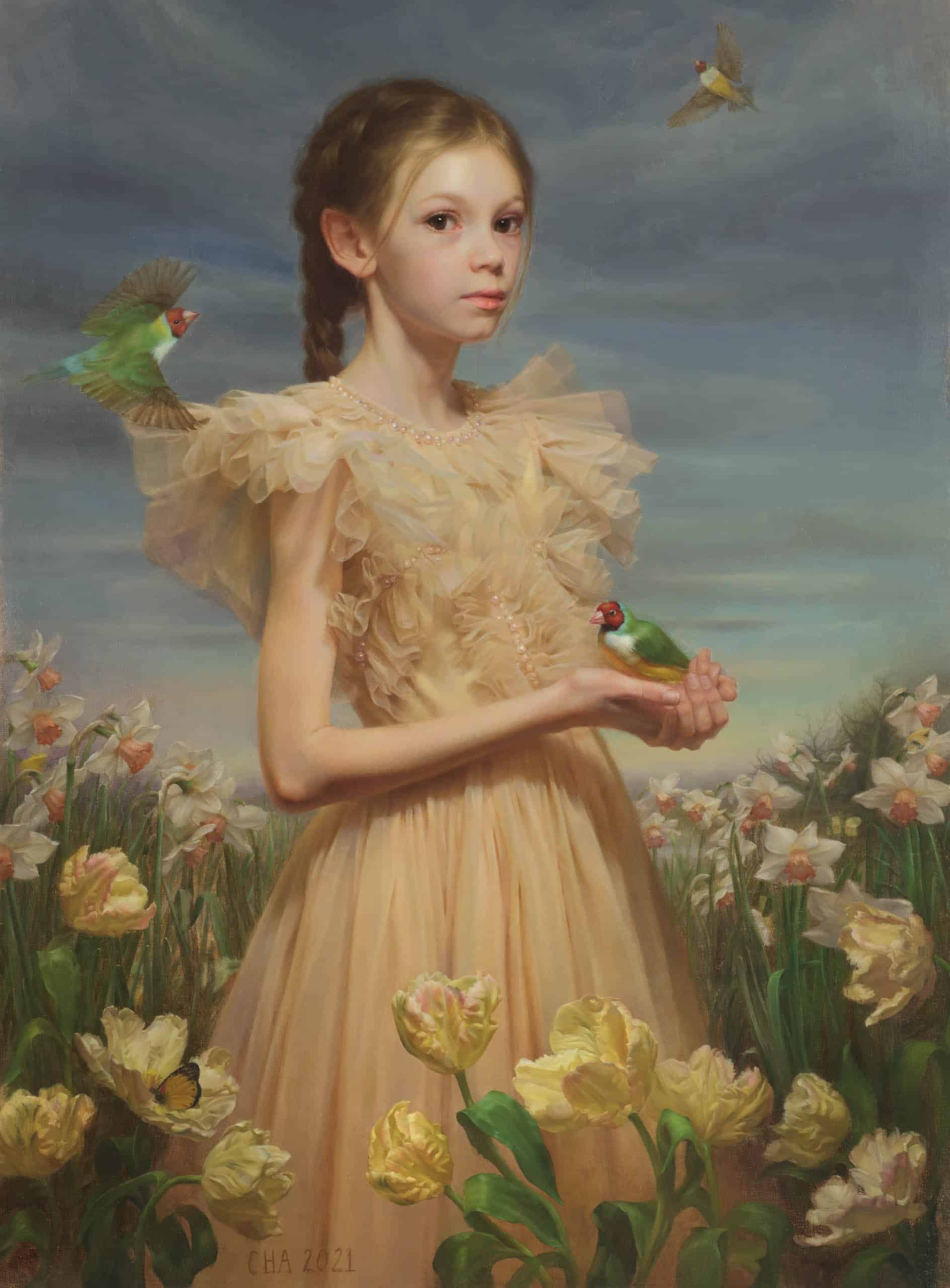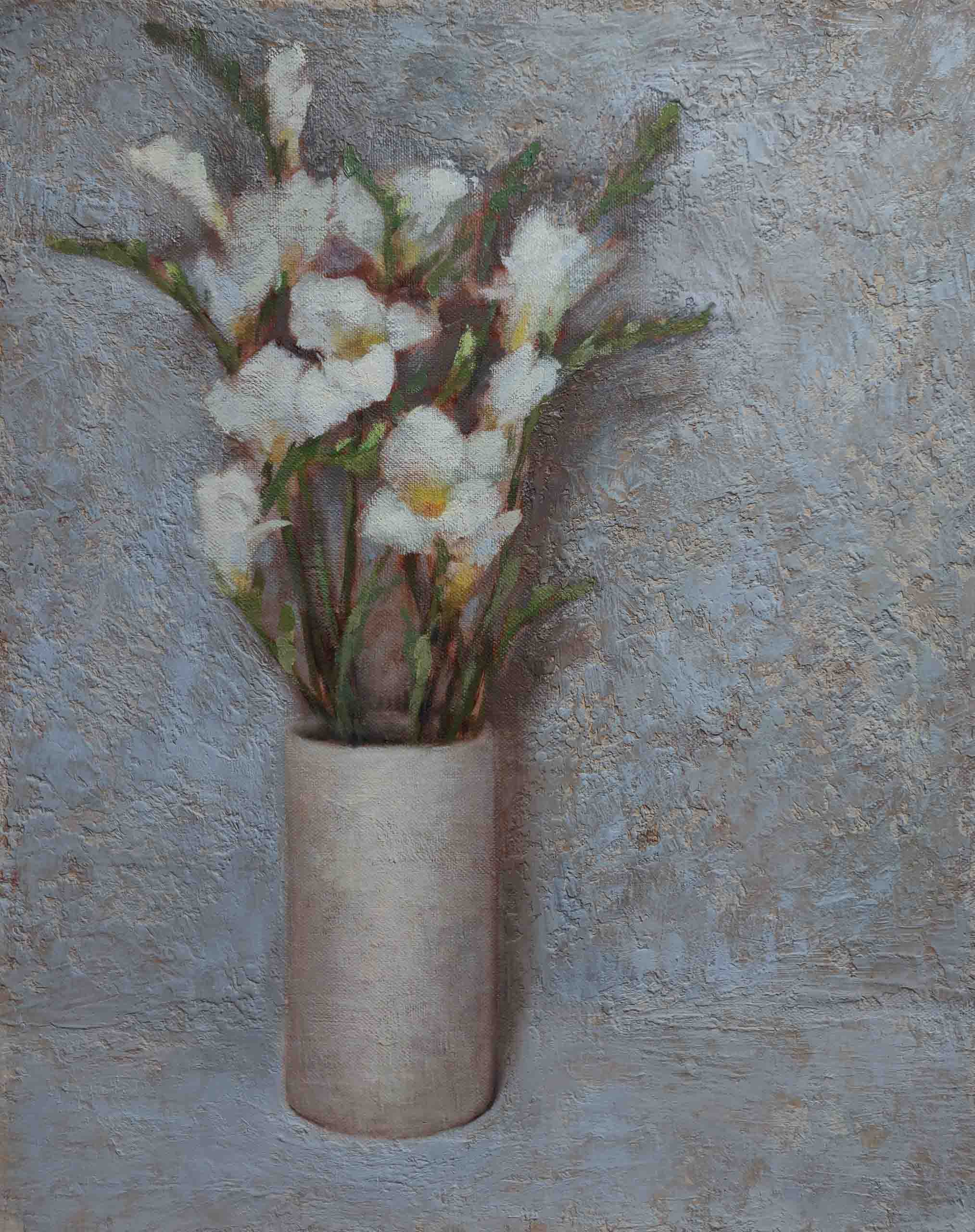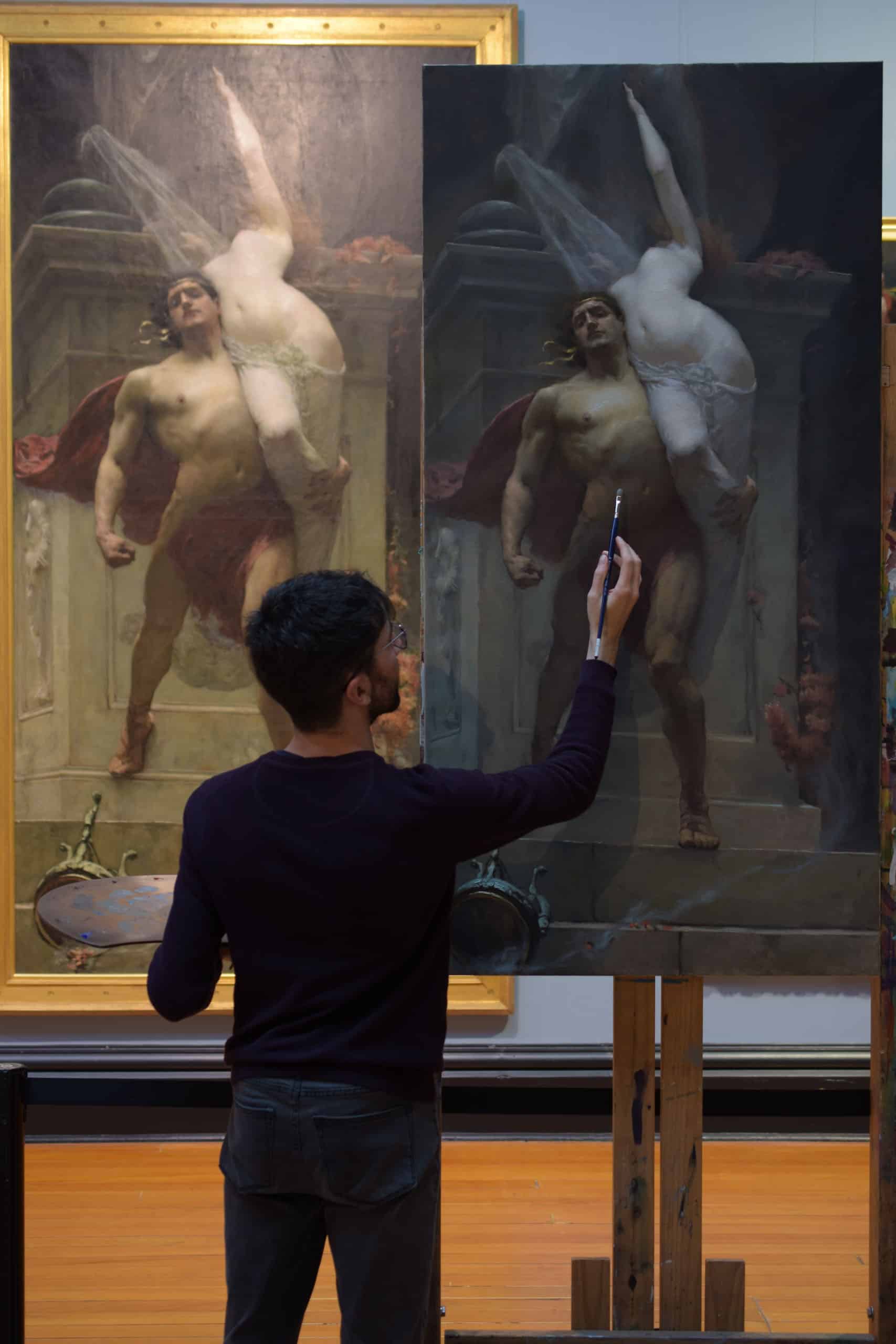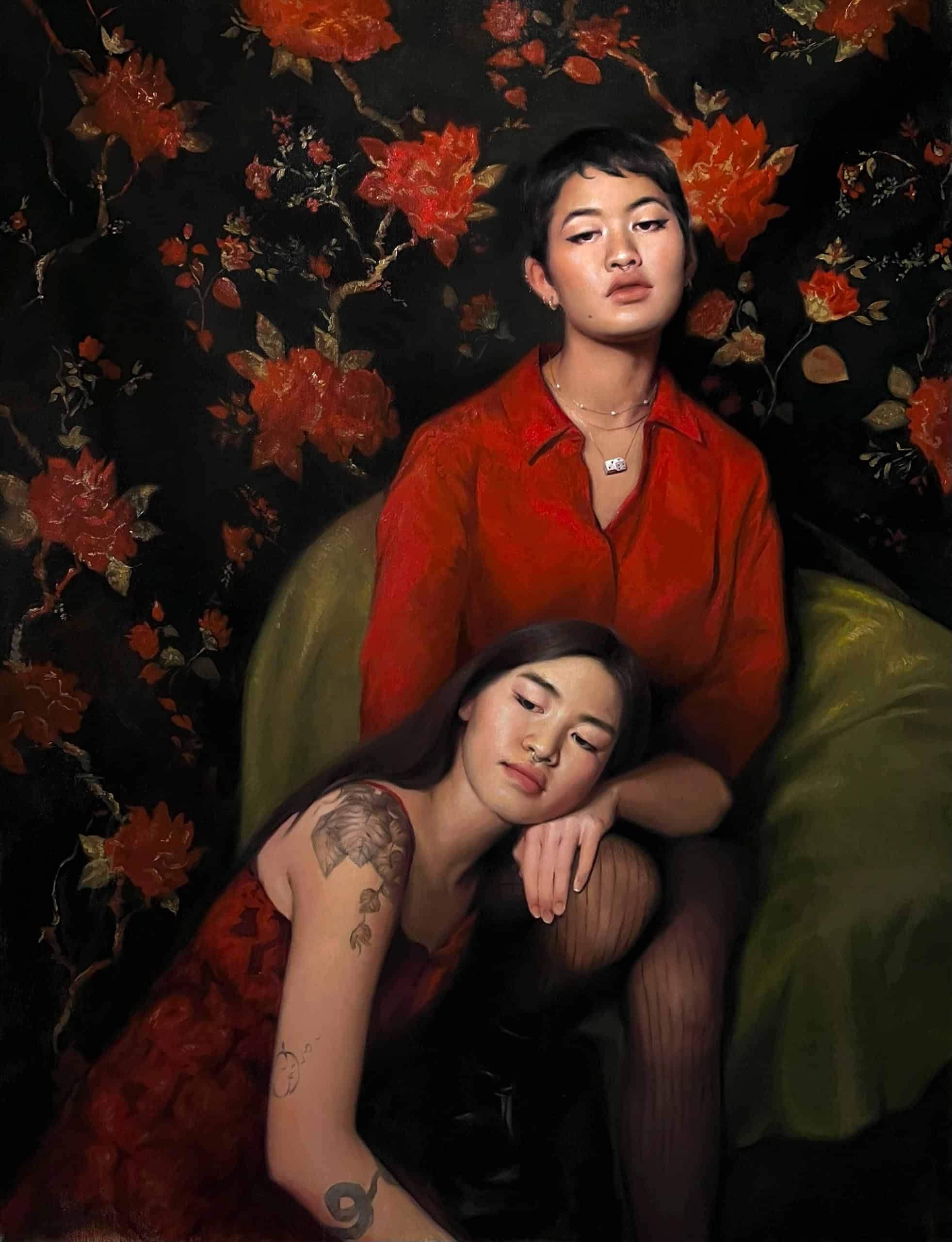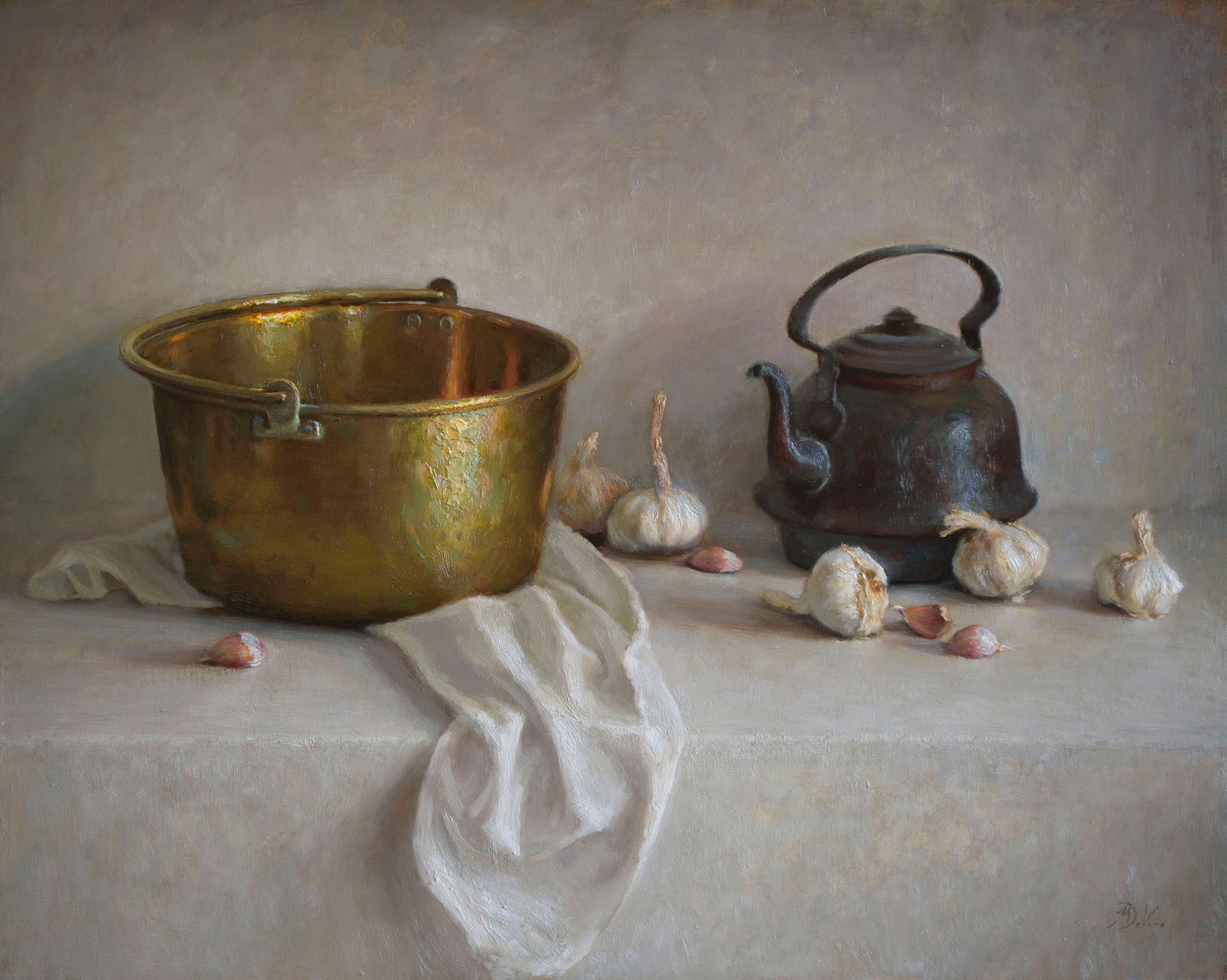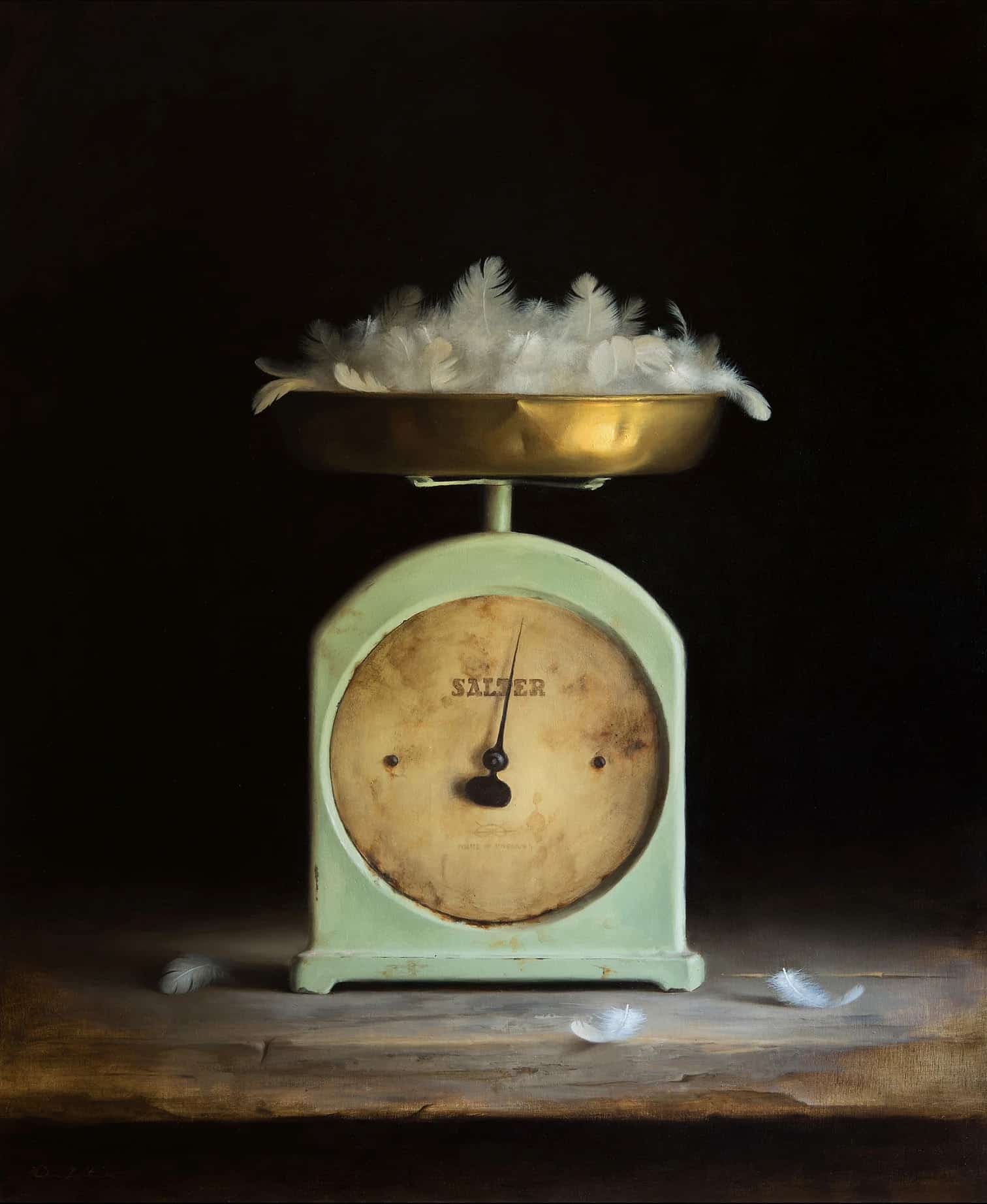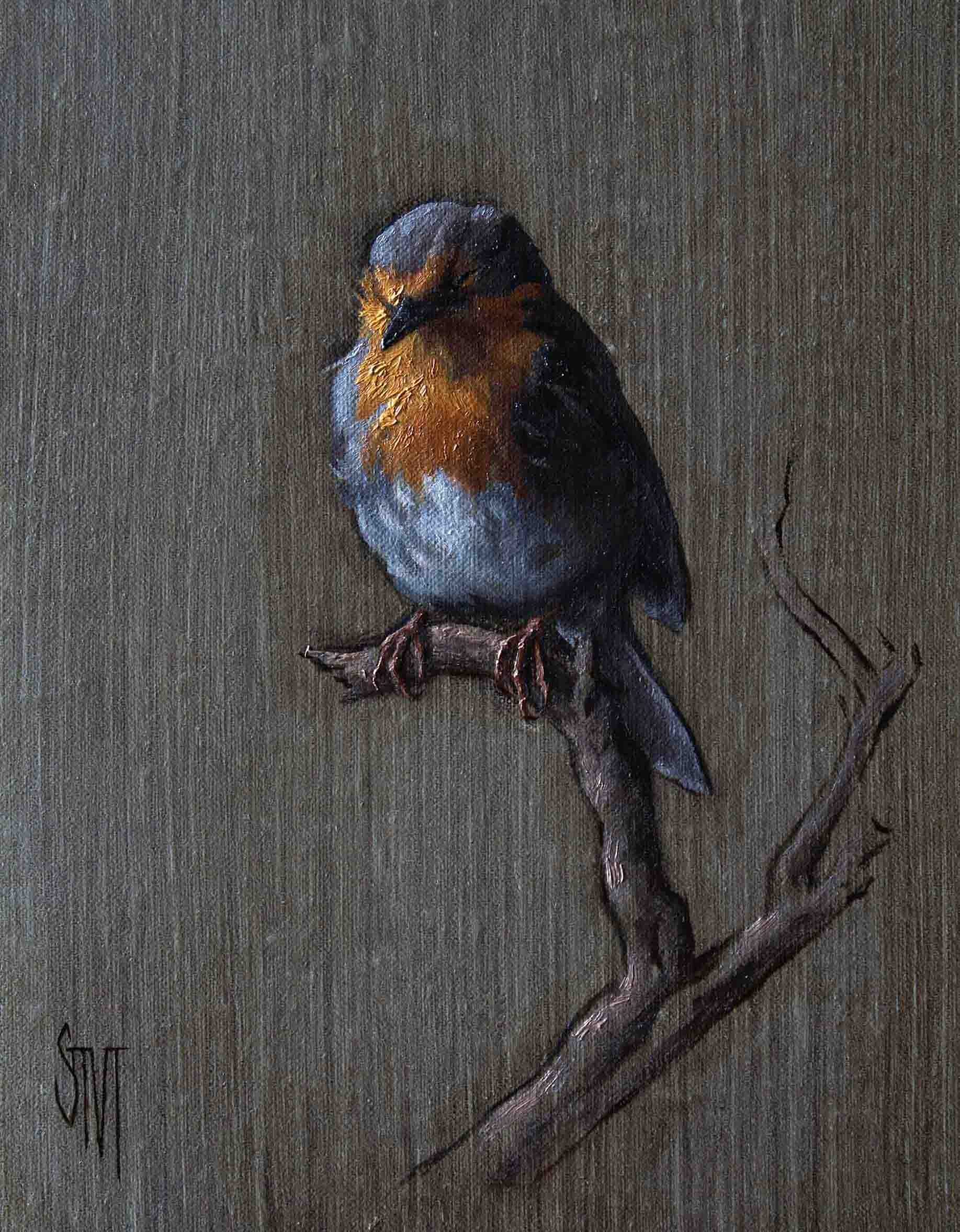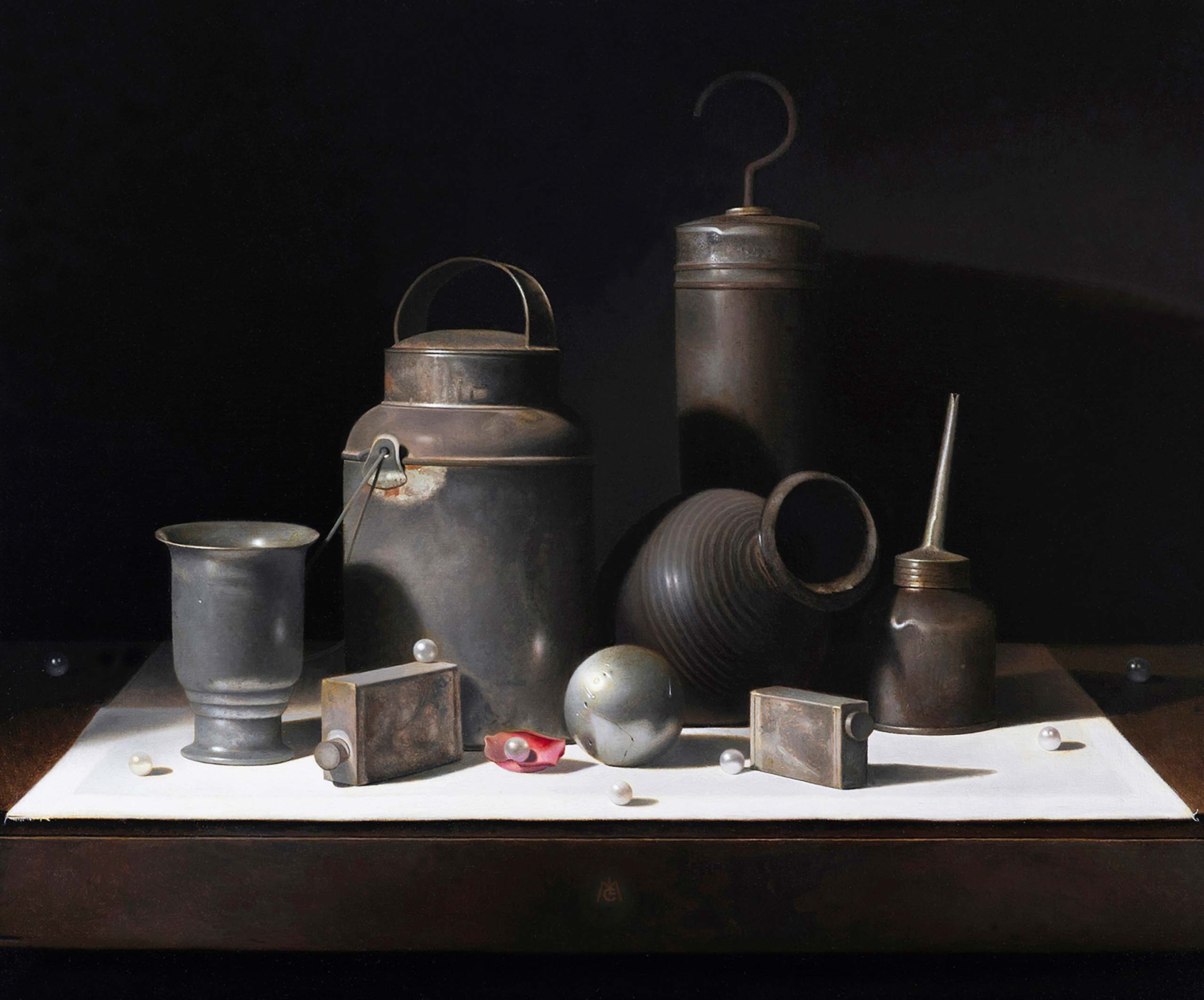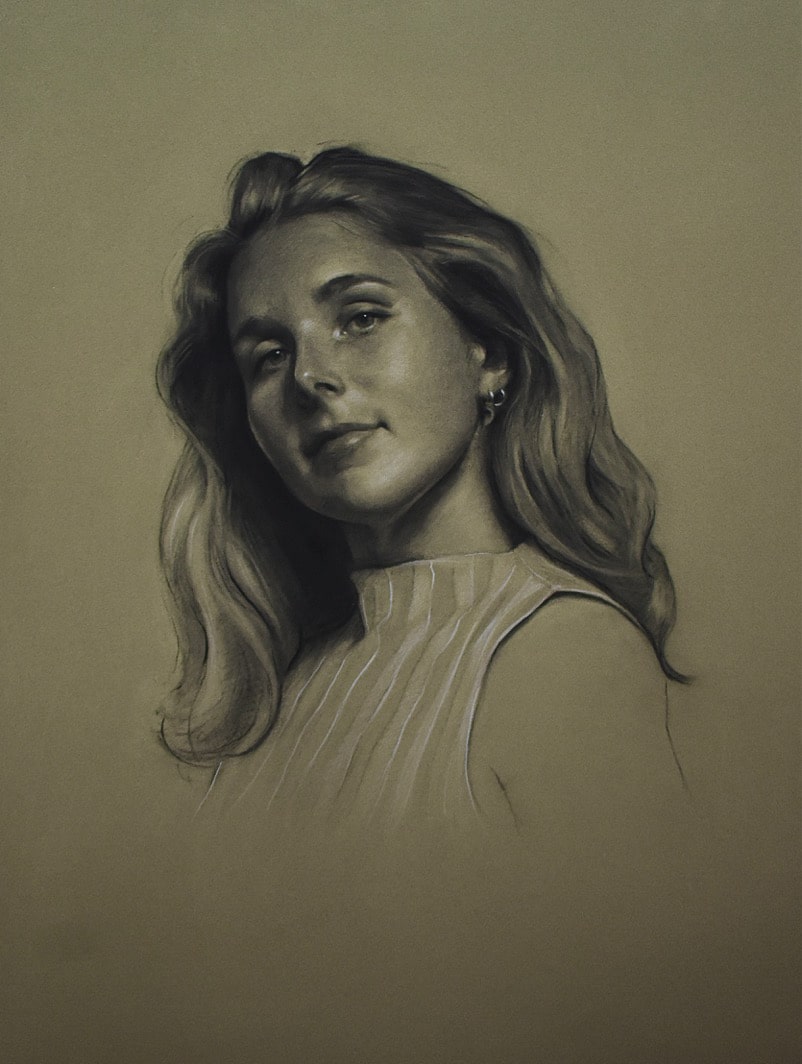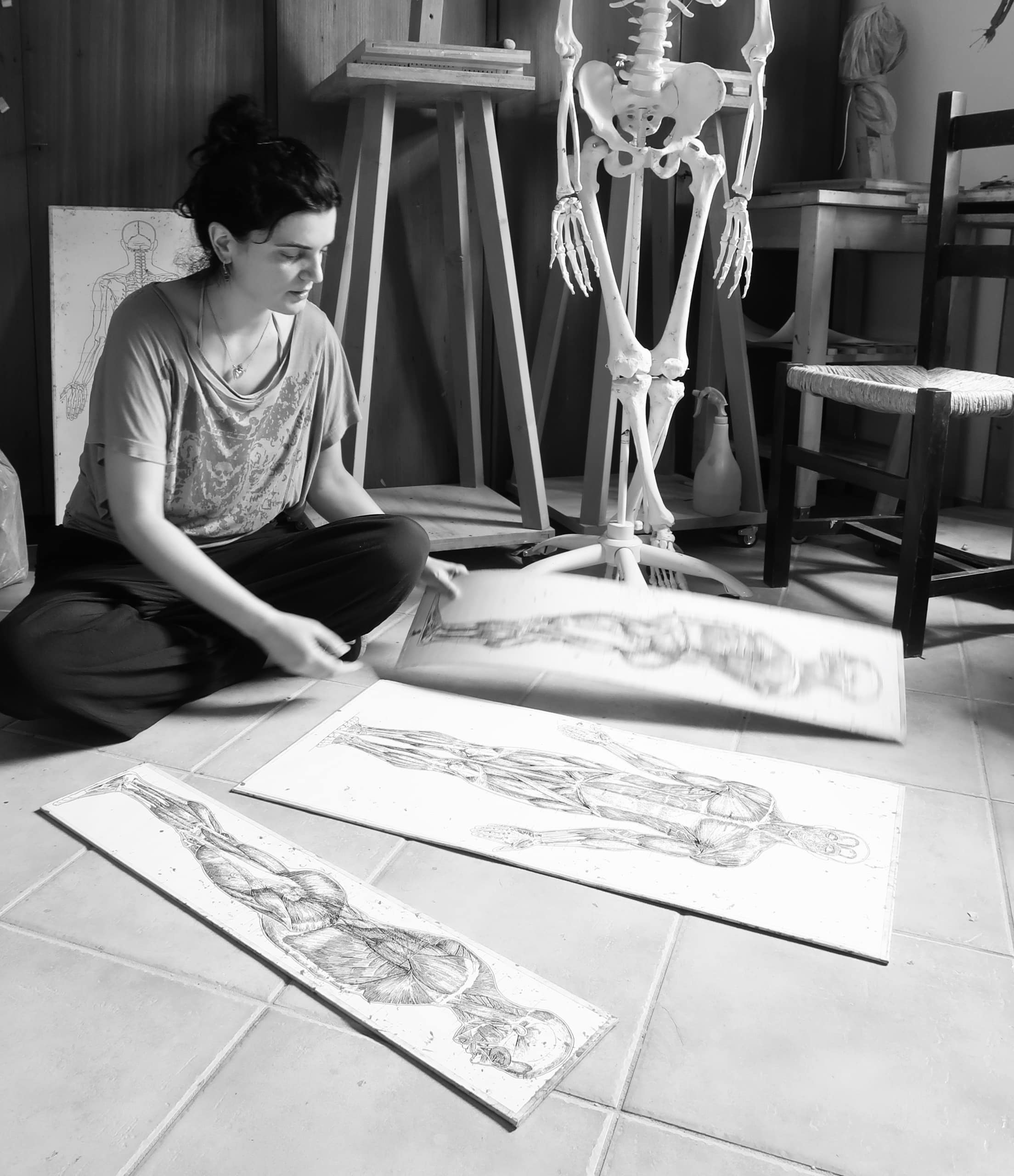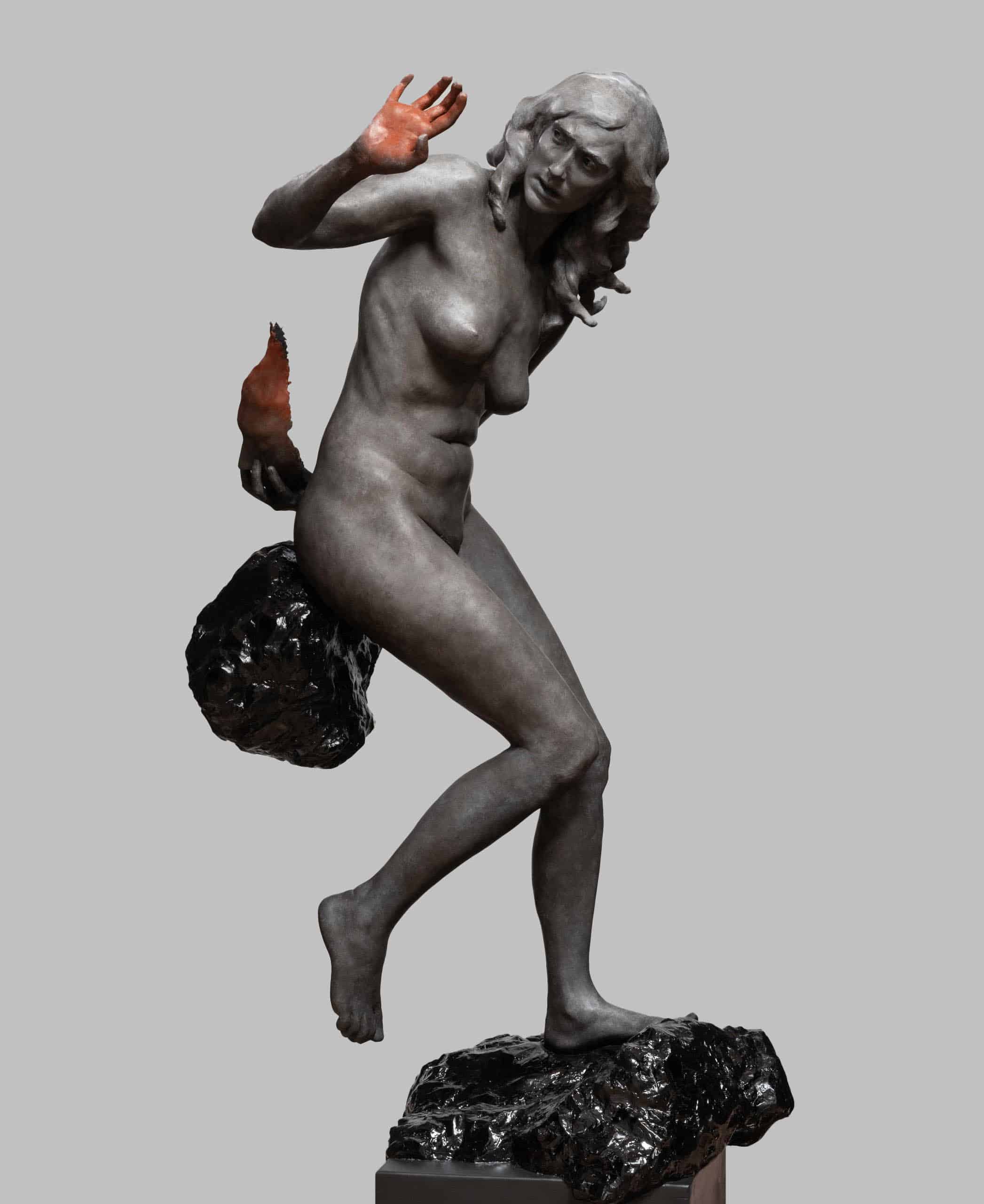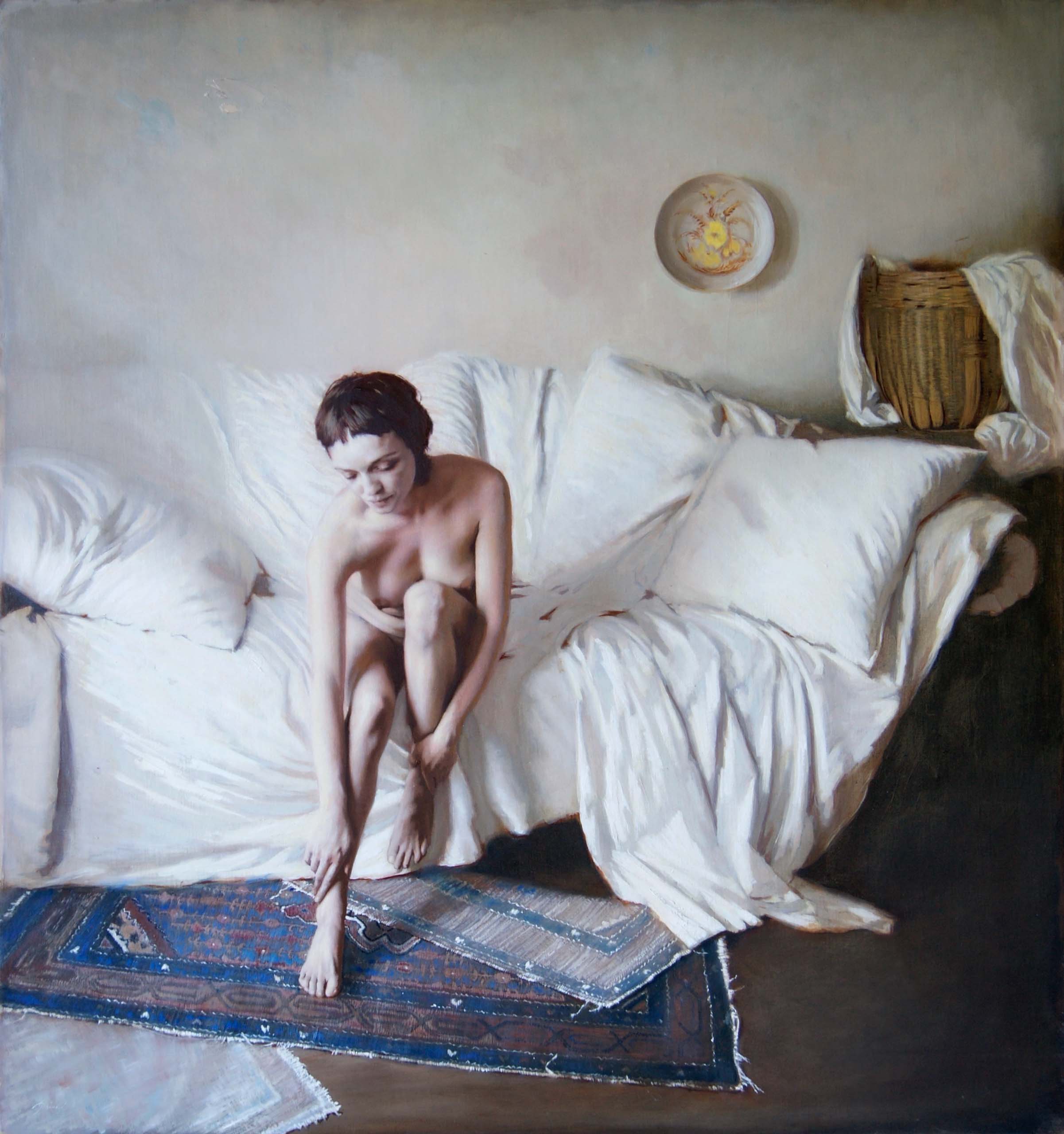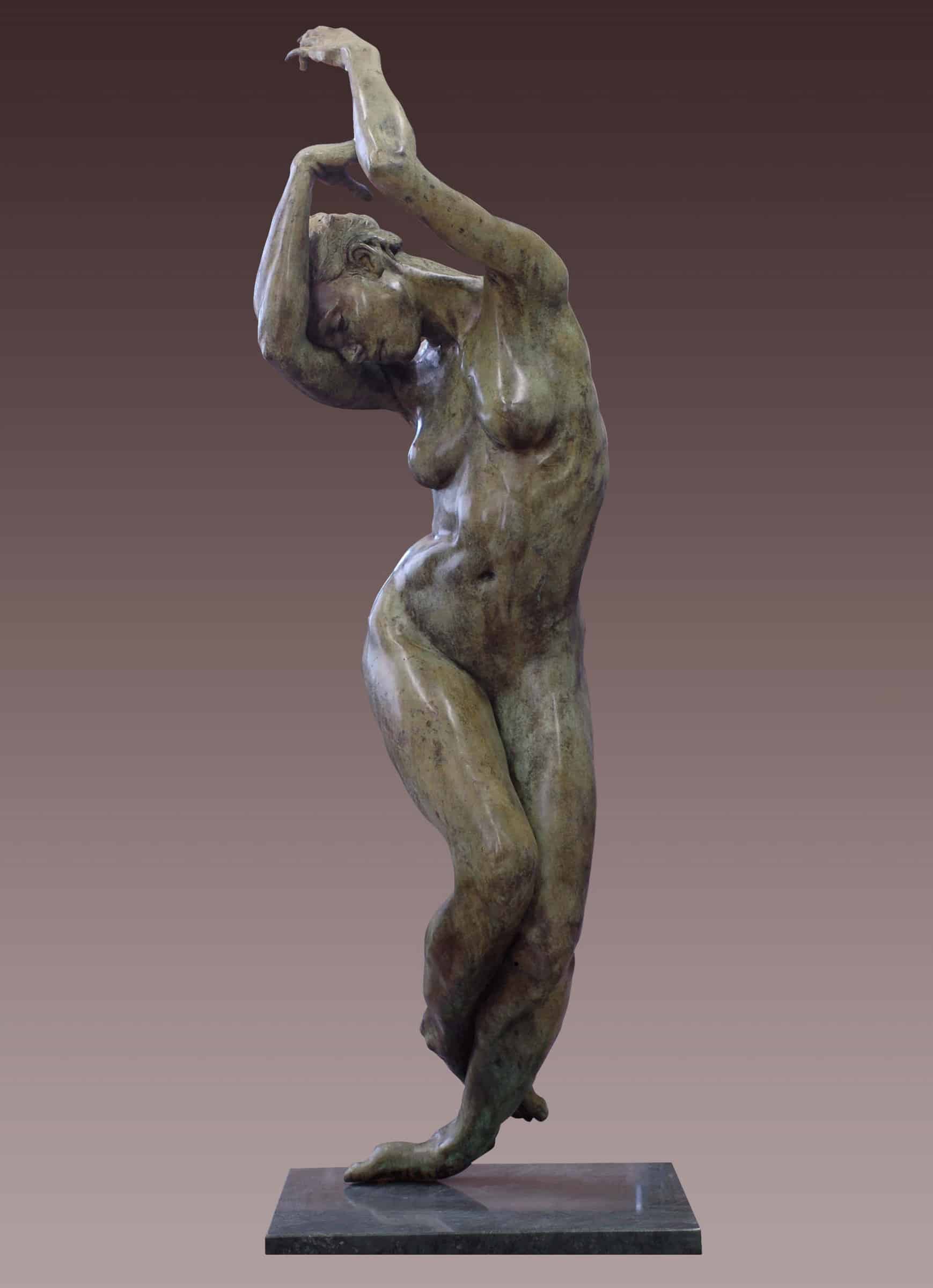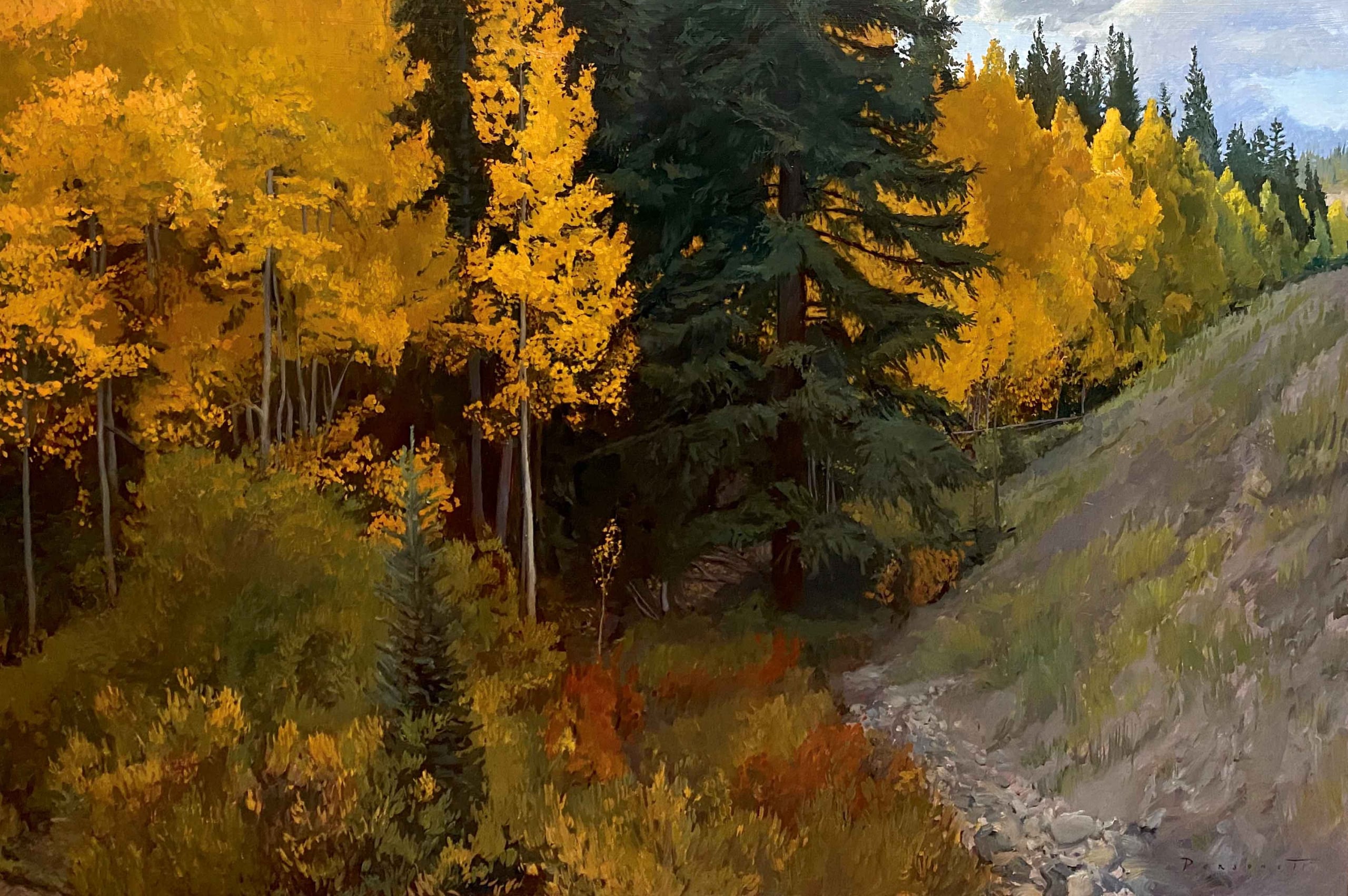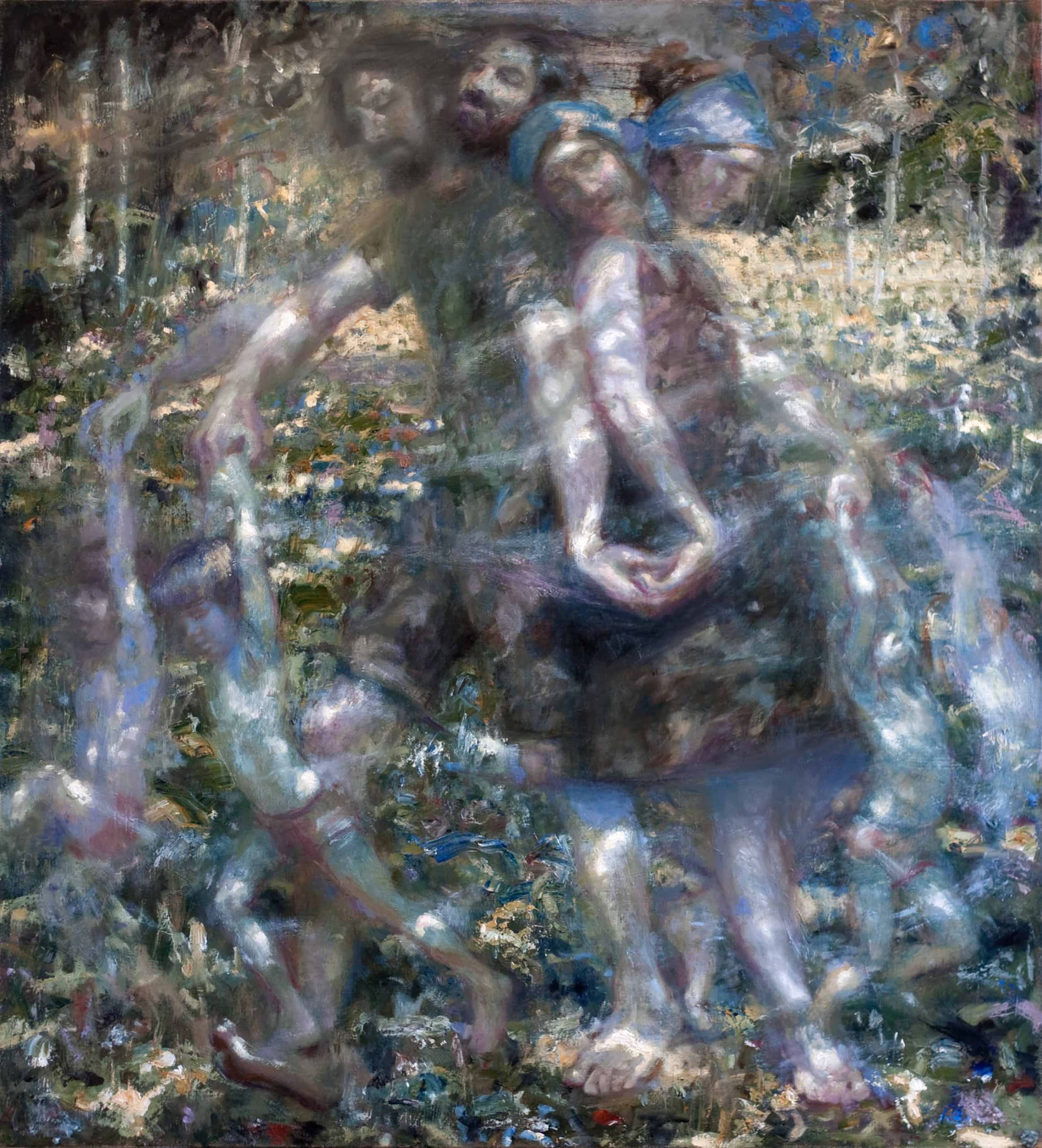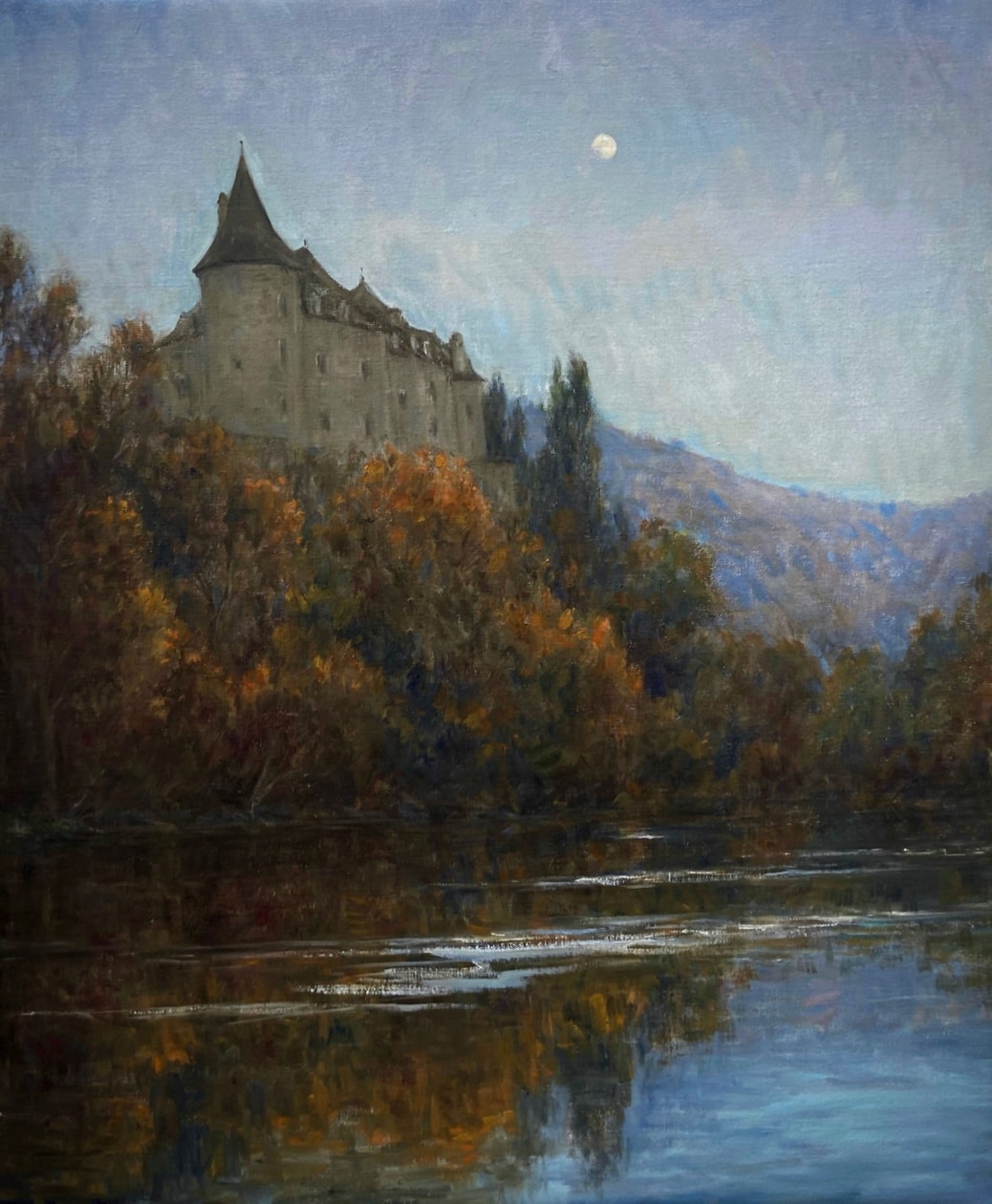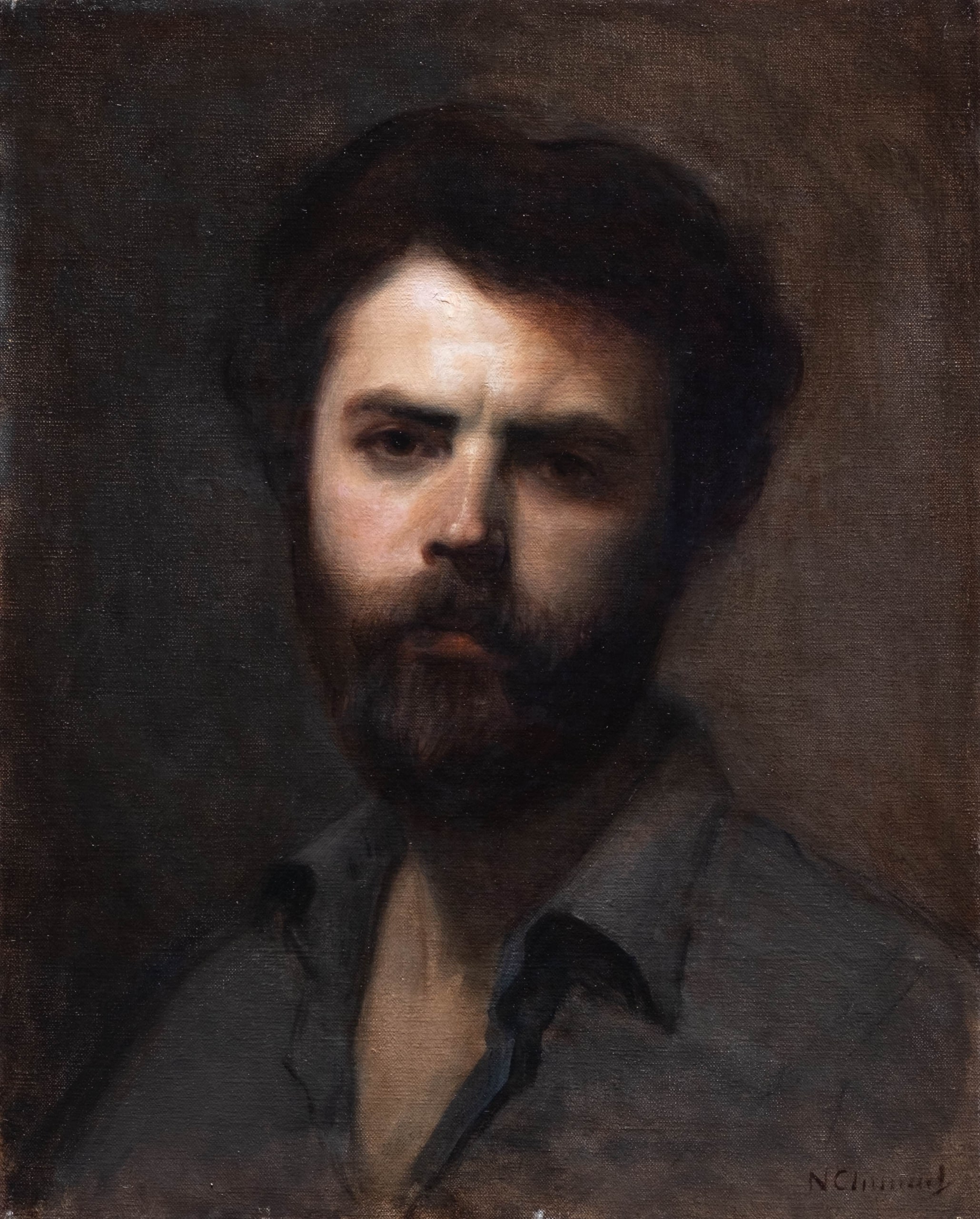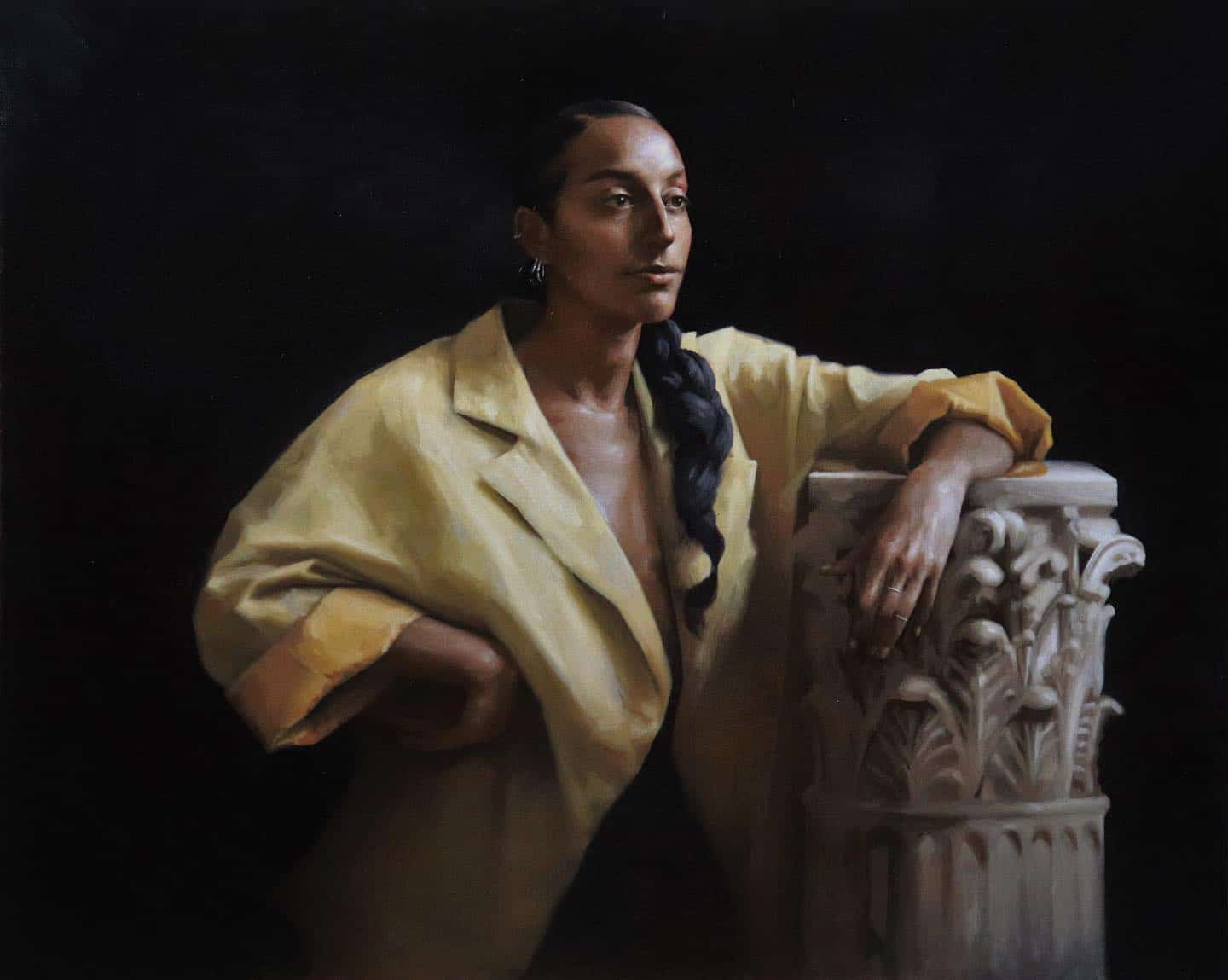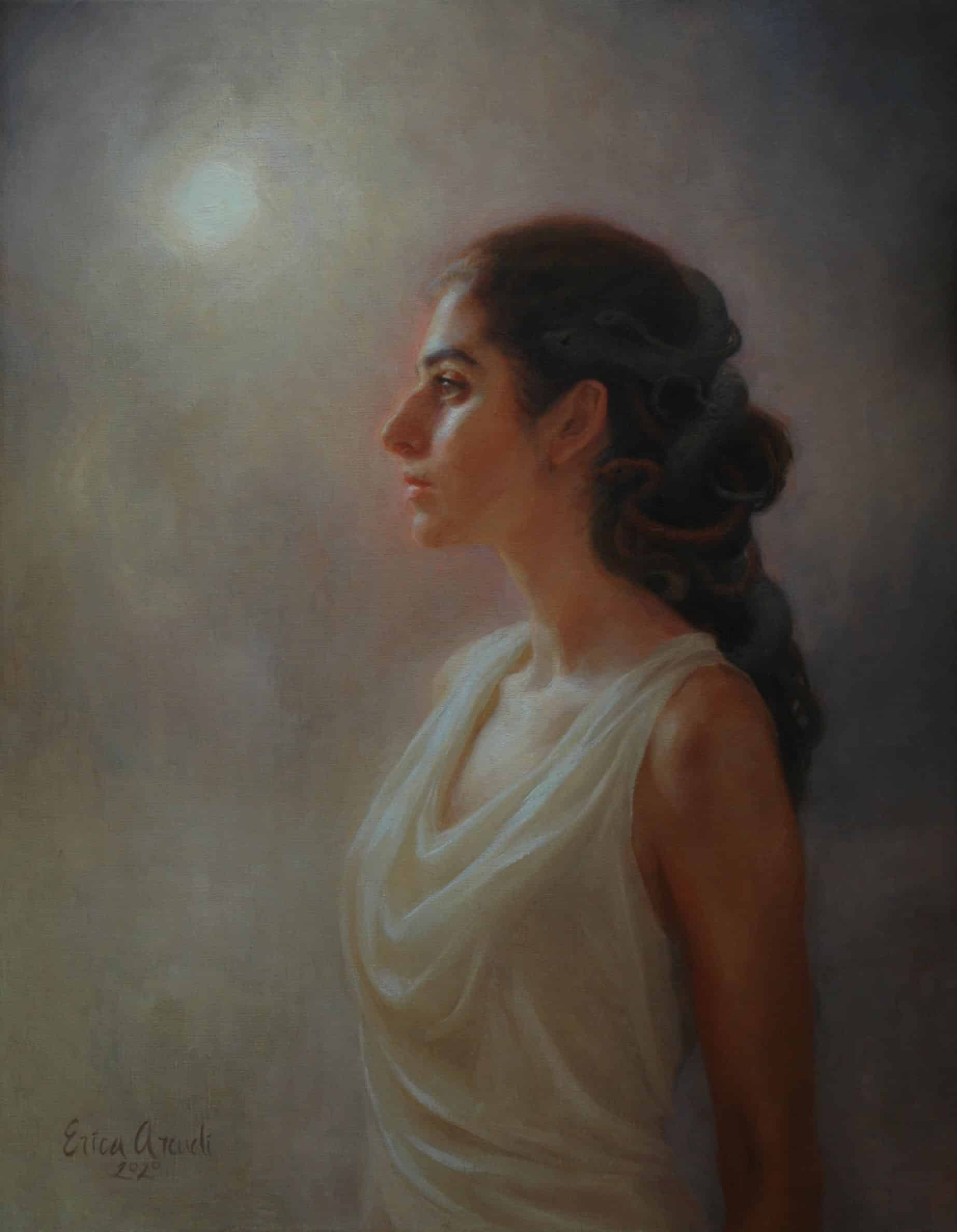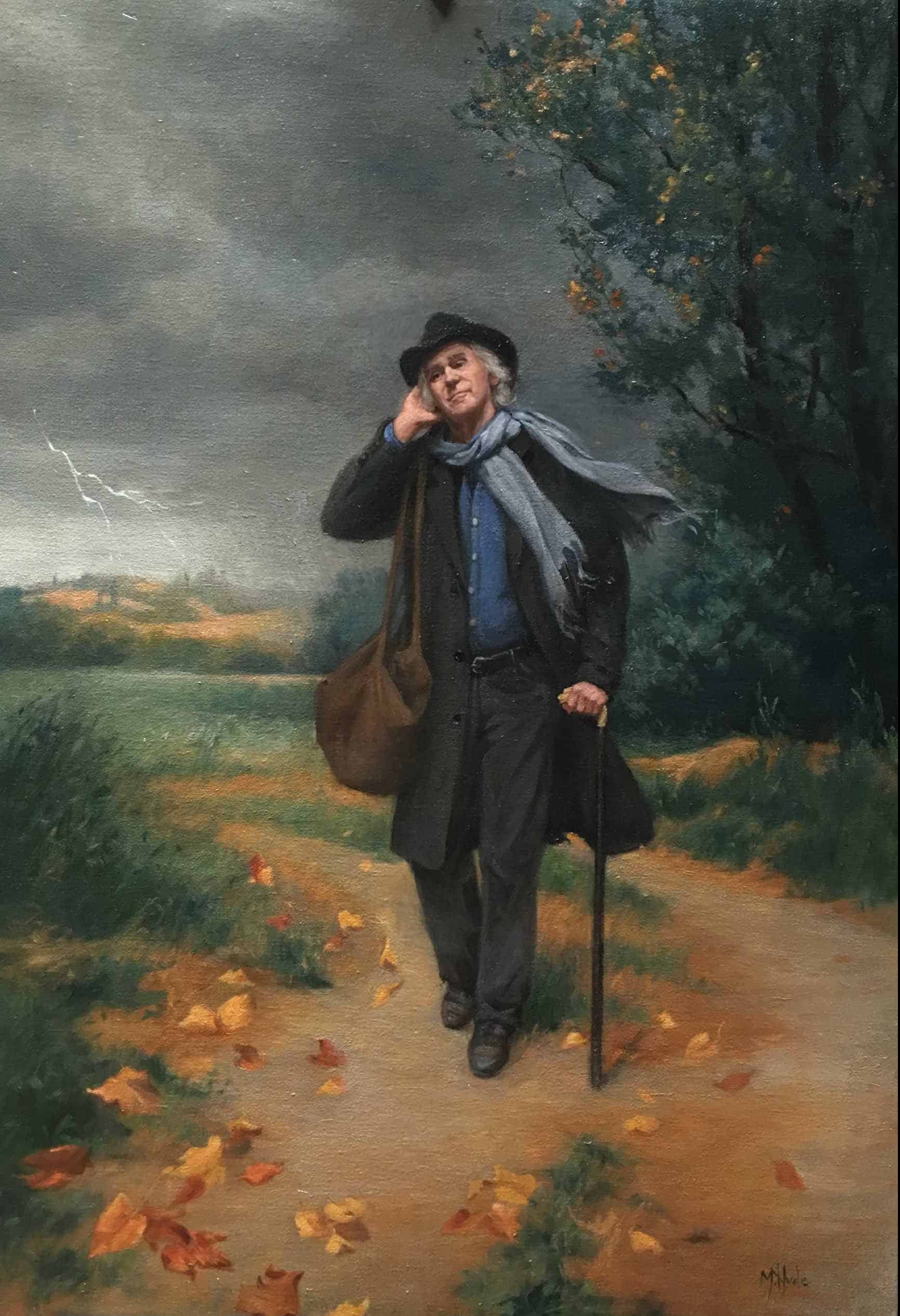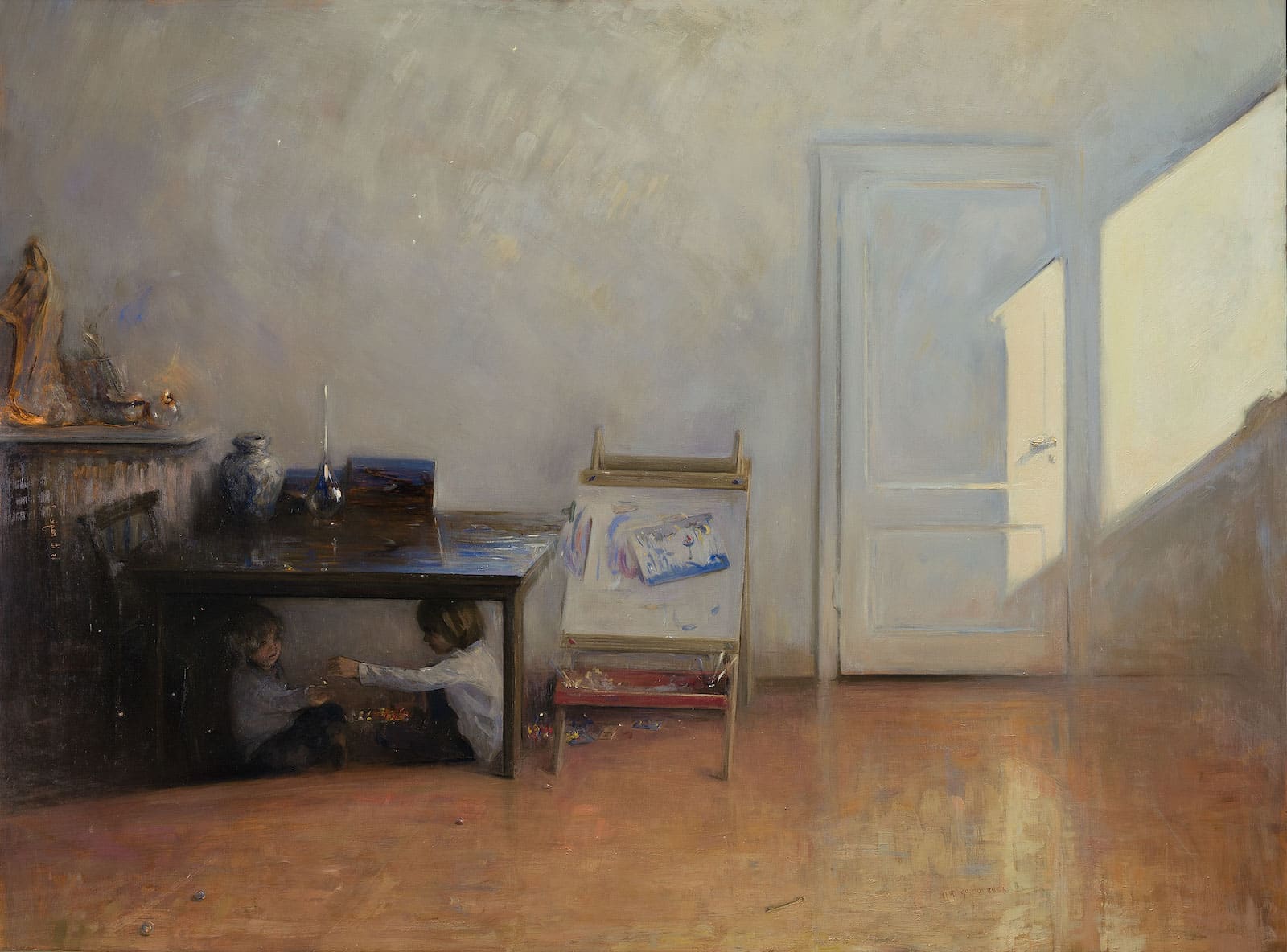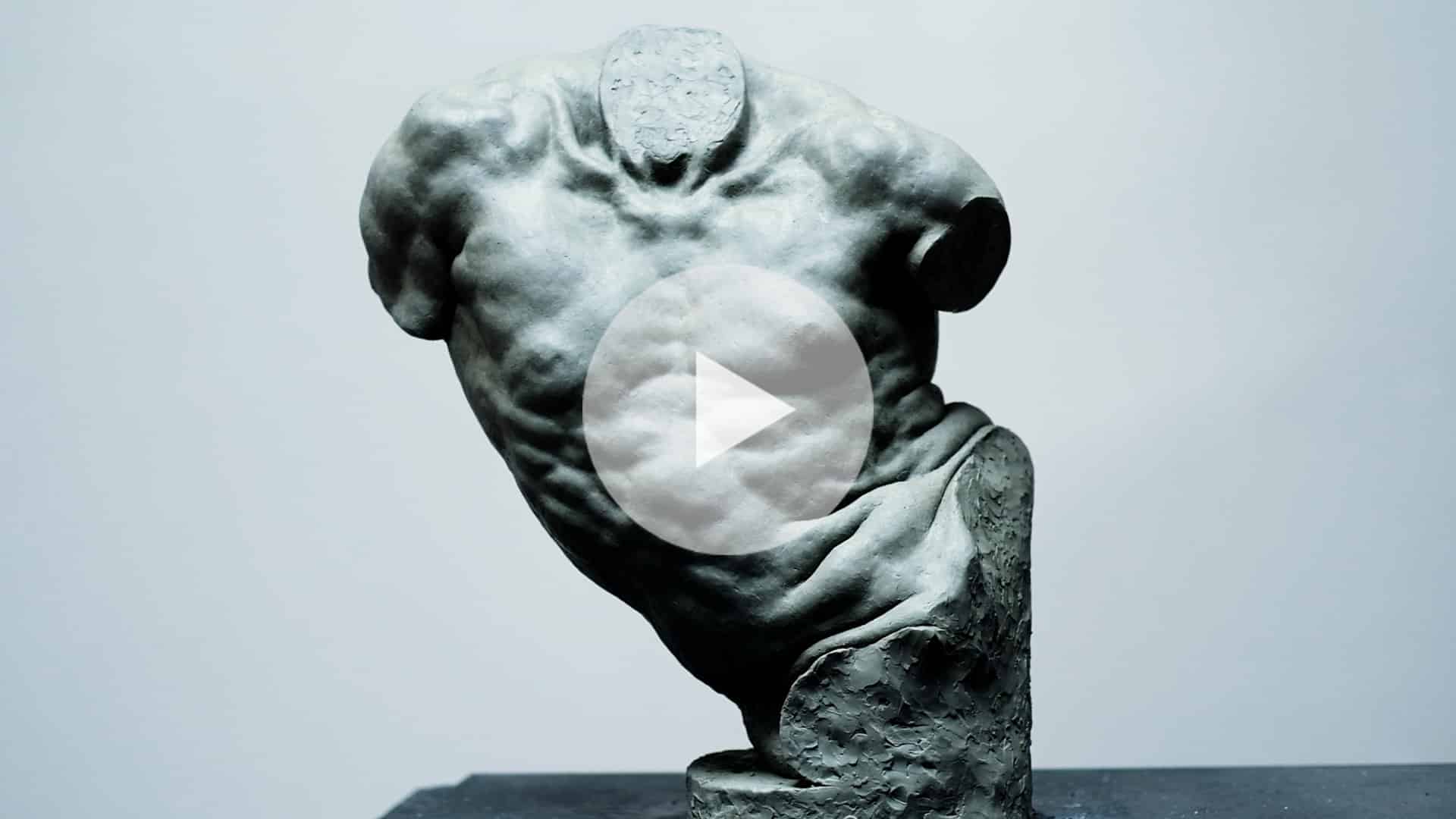February 19, 2022 / Spotlight on Art
A selection of drawings by
Justas Varpucanskis
While studying at The Florence Academy of Art one major impact on my work was the rich philosophical, cultural, and historical tradition of Florence. Alongside the philosophical notion of beauty, the idea of ‘divine simplicity’ greatly influences my work.
Justas Varpucanskis, "La Bella Attrice", Graphite and white chalk on toned paper, 8,5 x 5,5 in. 2018
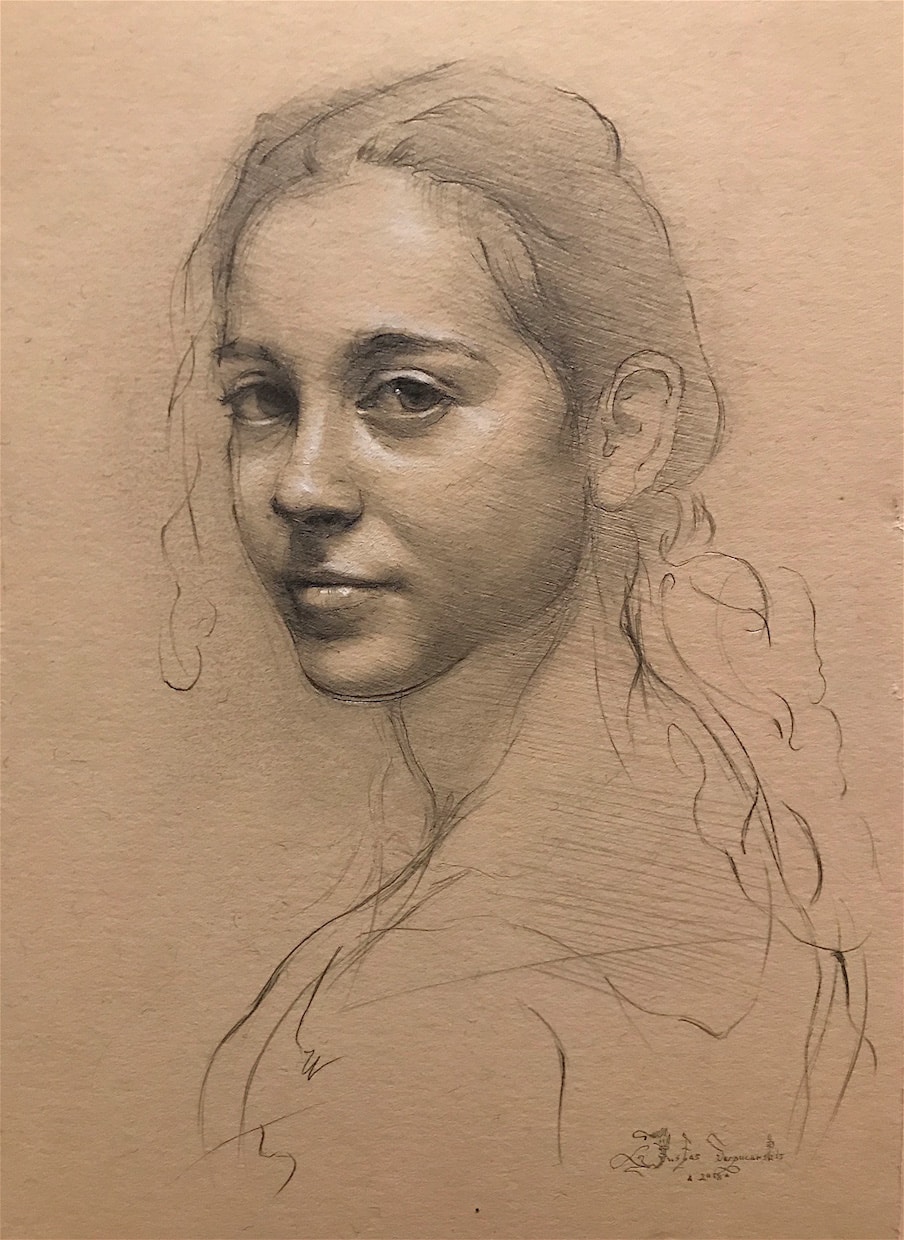
Justas graduated from the FAA Painting Program in 2018. After spending an additional year in Florence to work on developing his skill, Justas returned to Chicago. His work focuses mainly on portraiture, “trying to see the contemporary world through the contemplative lens of late medieval Europe.”
“When producing a work of art, many issues spring up that challenge the artist. One of the most fundamental seems to be this – what are end goals to which one paints to?
What serves as the most ardent drive in your work? Obviously this can change over the course of ones lifetime.

Justas Varpucanskis
“Camilla”
Graphite on toned paper
7 x 7 in.
2020
While studying at The Florence Academy of Art one major impact on my work, that beforehand, I would have never expected to see was the rich philosophical, cultural, and historical tradition of Florence. Painters that I recognized as masters but only in a very intellectual manner, like Leonardo and Raffaello, developed a deeper and more personal influence on my work. A few notable instances include seeing Leonardo’s Annunciation at the Uffizi, Pontormo’s Deposition at Santa Felicita, and experiencing the Vespers & Mass at the Badia Fiorentina.
I believe what was particularly striking about these works (and many others like the frescoes in San Marco) would be what the Renaissance humanists refer to as a return to “ad fontes”. A vision of simplicity towards the New Testament and that of classical texts.
Justas Varpucanskis
“Eli”
Oil on panel
11 x 14 in.
2020

Justas Varpucanskis
“Eli”
Oil on panel
11 x 14 in.
2020
Alongside the philosophical notion of beauty, this idea of “divine simplicity” greatly influences my work. In our chaotic contemporary world filled with many distractions, I see this contemplative vision of simplicity to be extremely necessary. It not only allows the viewer to momentarily pause, but it also brings an opportunity to see the exterior world in a more refreshing manner.
When working from nature or dealing with compositions, I try to reduce my work to its simplest terms allowing the breadth of modelling and the potency of line to grip the viewer. I like to emphasize tone in my work also. Given the inherit properties and limitations of many drawing materials and oil paint, I find that this helps to compliment the work.

Justas Varpucanskis
“Ritratto di Noemi”
Graphite and white chalk on toned paper
7 x 10 in.
2019
A final aspect of my working process includes the interest in the materials used to create a work of art. This indirectly carries over to the notion of simplicity. The way I tone paper, mull paint, prepare panels is pretty straightforward and almost always involves very organic materials.
The unique quality I see of doing everything from scratch is it gives the work a great deal of character, one that is filled with many “perfect imperfections”. It is one quality I absolutely love about the Old Masters – particularly those trained under the guild system. Absolutely nothing looks static or mechanical about their work. Even certain areas that are painted over (such as the ground or panel) carry a great deal of life in themselves. I strongly believe that small details like this in works of art, when compounded can bring an immense amount of value to a culture.”
More about Justas Varpucanskis
Justas Varpucanskis was born in Chicago, Illinois, 1997. He attended The Florence Academy of Art, graduating from the Advanced Painting program in 2018. After the completion of the program, Justas was awarded the Fourth Year Prize where he pursued further study and personal research. His work mainly focuses on classical and religious narratives alongside portraiture. On a philosophical level he draws a great deal of inspiration from the Renaissance Humanists, believing that there is no more important issue in our culture (in both sacred and secular) than the restoration of beauty.



